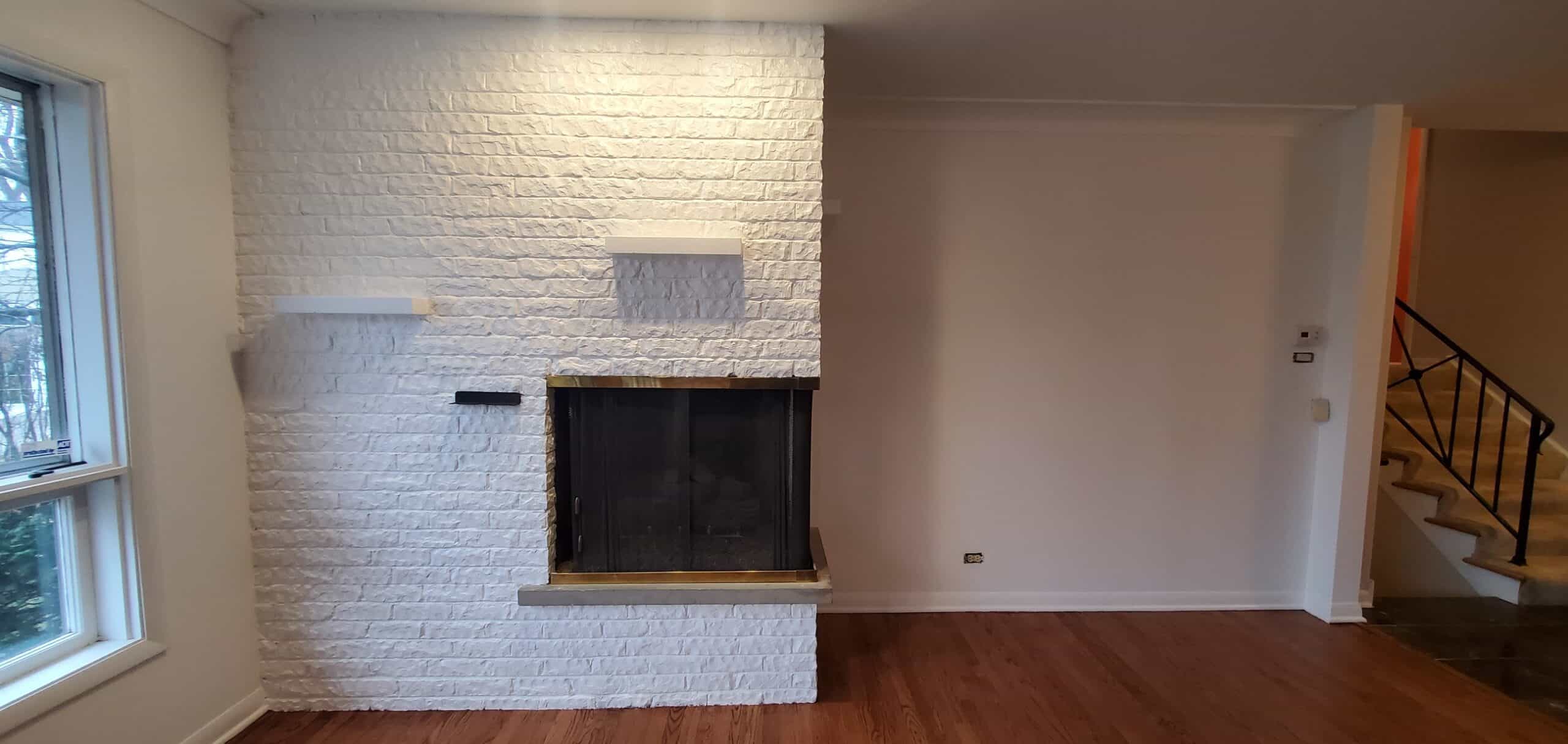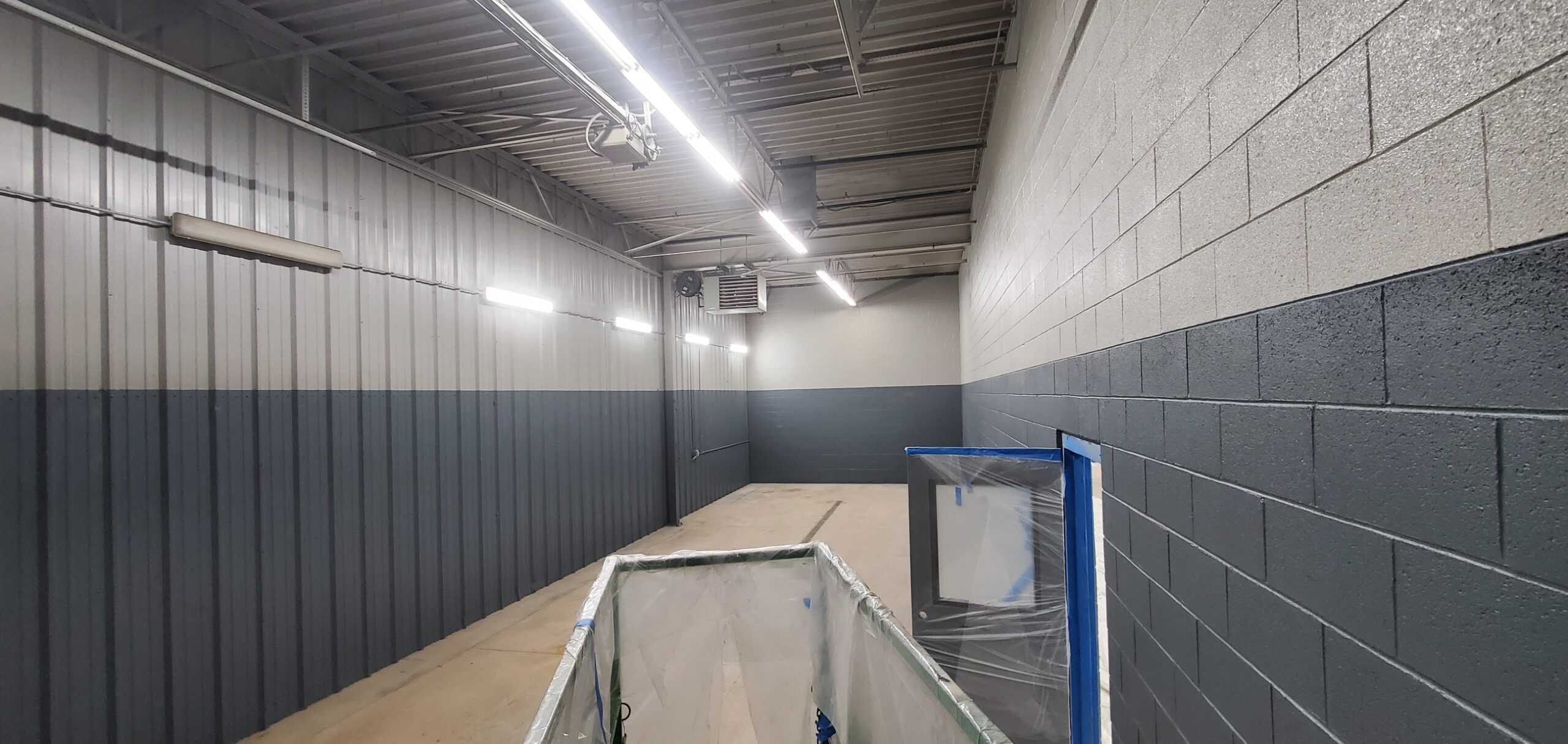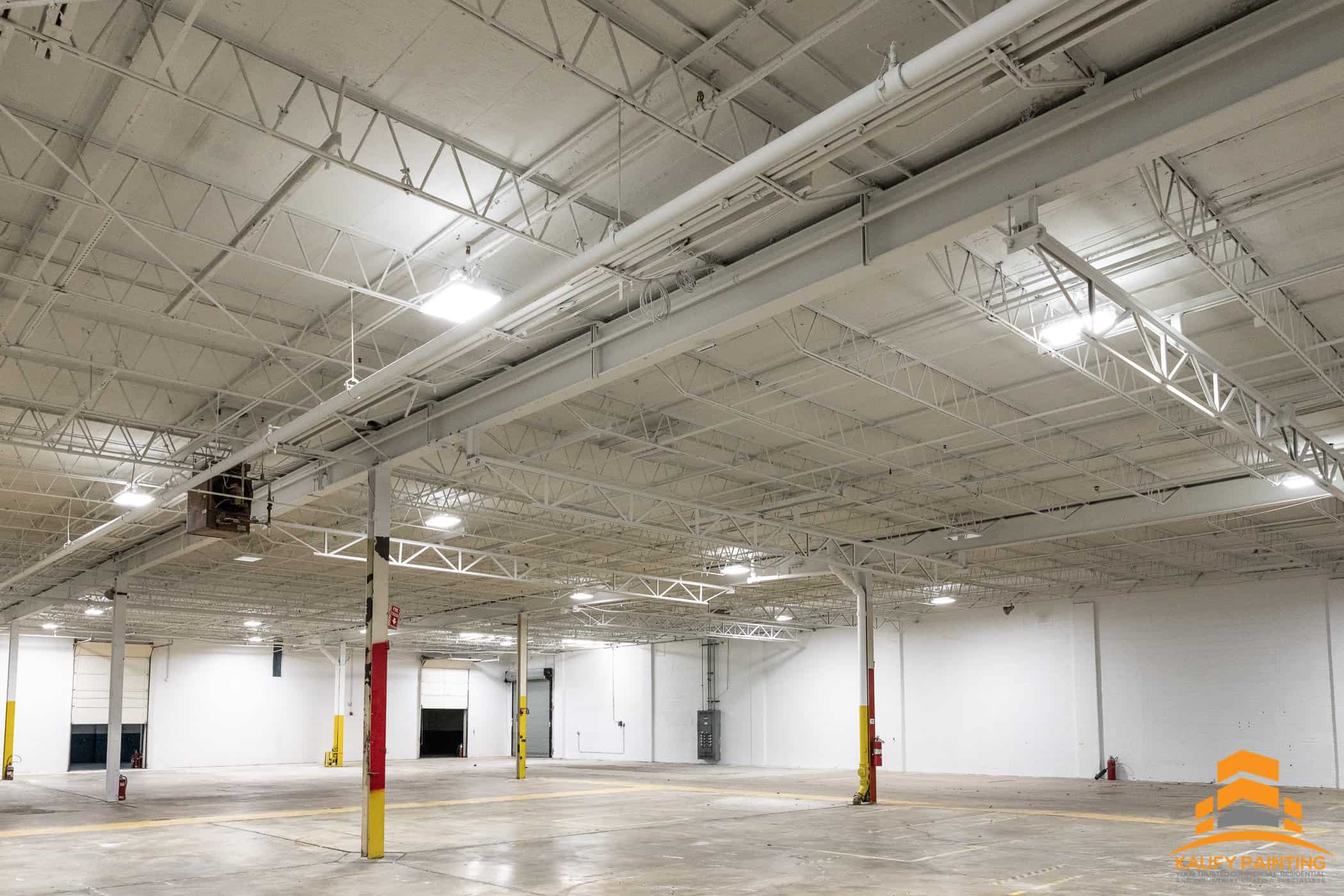A fresh coat of paint can completely change the feel of your home, whether you’re updating a single room or giving the entire exterior a new look. But before grabbing a brush, you’ll need to decide which method suits your project best: roller painting vs spray painting.
Both techniques have their place, and the right choice depends on factors like the surface type, project size, and how much prep work you’re willing to do. If you’re a homeowner in Livonia, MI, considering an interior painting project, understanding the differences can help you achieve professional-looking results.
So, which one should you go with? Let’s explore the pros, cons, and best uses for roller painting vs spray painting to make sure you get a smooth, lasting finish.
Key Takeaways:
- Spray painting is best for large areas and textured surfaces like stucco, masonry, and popcorn ceilings, but it requires extensive masking to prevent overspray.
- Roller painting provides more control, wastes less paint, and is ideal for interior walls, ceilings, and smaller projects where precision matters.
- Sprayers work well for exterior surfaces such as brick, plaster, and siding, offering even coverage and faster application.
- Rollers are budget-friendly and require less prep, making them the go-to choice for interior painters in Livonia, MI.
- Choosing between roller painting vs spray painting depends on the project size, surface type, and whether speed or precision is your priority.
When to Use a Paint Sprayer: Speed, Texture, and Large Surfaces
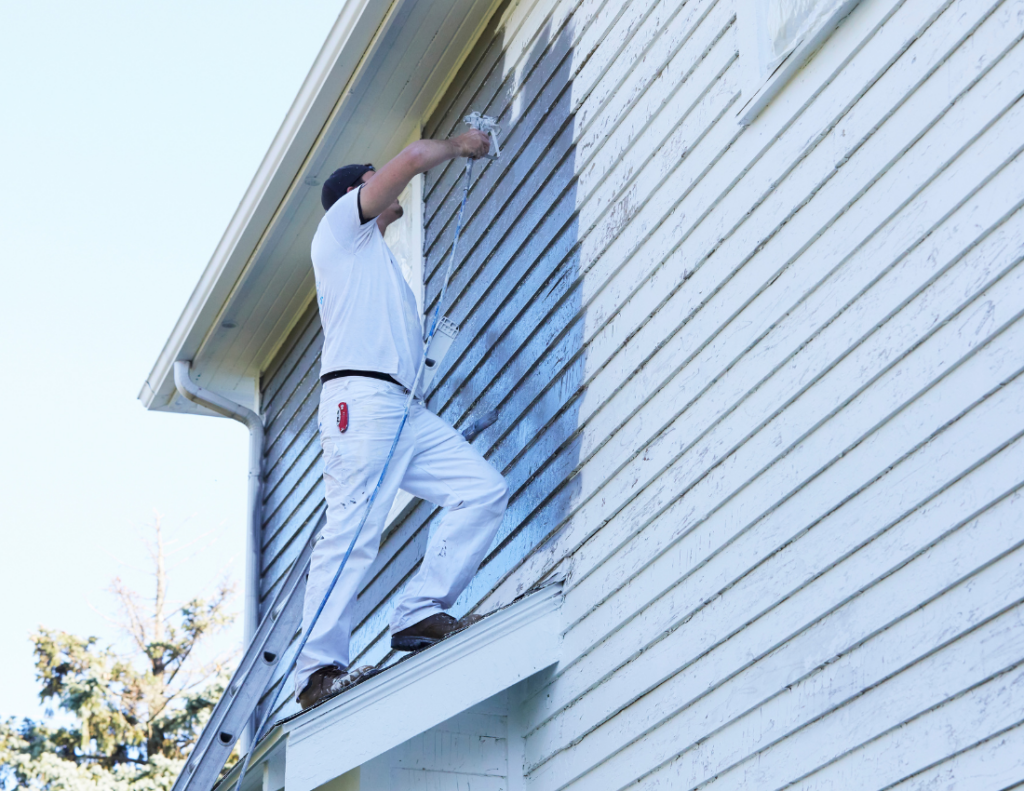
A paint sprayer is a powerful tool that can apply paint faster than a brush or roller, making it ideal for large surfaces and intricate details. But it’s not always the easiest option, especially for beginners.
Ideal for Textured or Detailed Surfaces
If you’re painting popcorn ceilings, stucco, masonry, or intricate woodworking like crown molding or built-up baseboards, a sprayer is the way to go. Unlike rollers, which can struggle to get into tight crevices, a paint sprayer applies a fine mist that evenly coats even the most detailed surfaces.
Great for New Construction or Unoccupied Spaces
A sprayer is most effective when you’re working in an empty space. If you’re painting a newly built home, remodeling, or repainting before moving into a property, you won’t have to worry about overspray getting on furniture, carpets, or fixtures.
Perfect for Exterior Painting
If your project involves brick, stucco, or siding, a paint sprayer delivers a smooth, even finish much quicker than a roller. It’s especially useful for painting garage doors, plaster walls, fences, and concrete surfaces where a roller might struggle to provide full coverage.
Things to Keep in Mind Before Spraying
- Masking is Required: Paint sprayers can get messy. You’ll need to mask off windows, baseboards, doors, and floors to avoid getting unwanted paint everywhere.
- Paint Wastage: A sprayer typically uses more paint than a roller due to mist and overspray, increasing the cost of your house painting project.
- Ventilation is Important: If you’re spraying oil-based or acrylic paint indoors, proper ventilation is necessary to avoid inhaling paint fumes.
Why a Paint Roller Might Be the Better Choice
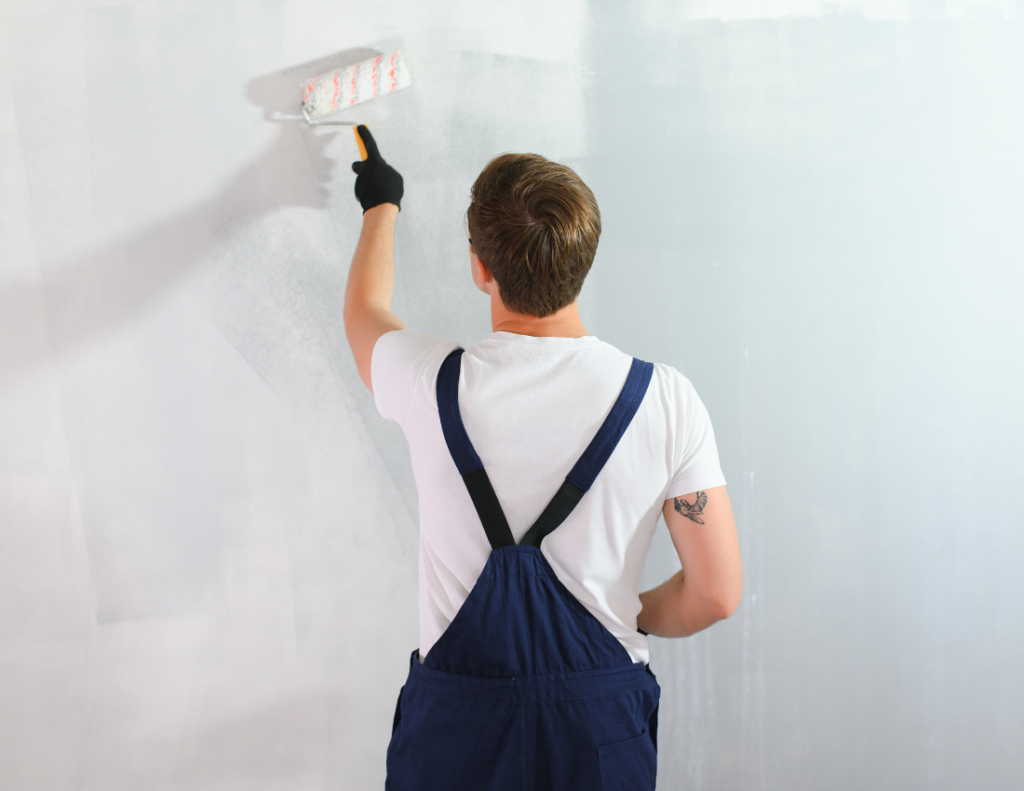
While spray painting offers speed, roller painting provides control, making it the preferred method for most interior painters Livonia MI—especially in homes with furniture, flooring, and fixtures to work around.
Smooth Coverage with Minimal Mess
If your goal is to achieve consistent coverage on drywall, ceilings, or smooth interior walls, roller painting is the way to go. A paint roller lays down an even coat, making it easier to maintain uniform color and texture across the entire surface. Since rollers don’t create a fine mist like a paint sprayer, there’s no risk of overspray ending up on windows, furniture, carpets, or flooring.
This makes rollers a practical choice for lived-in spaces where covering every nearby surface with plastic sheets and painter’s tape isn’t realistic. You can work room by room, tackling one section at a time without worrying about paint drifting where it shouldn’t.
Less Prep Work, More Precision
One of the biggest advantages of roller painting is the minimal preparation required. With a paint sprayer, you’ll need to mask off the entire room to prevent unwanted paint from settling on baseboards, doors, and furniture. This process can take hours, especially for detailed interiors with built-in cabinetry or decorative molding.
With a paint roller, prep is straightforward:
- Cut in edges with a paintbrush, ensuring clean lines near ceilings, baseboards, and corners.
- Use the roller for larger areas, allowing for smooth, consistent coverage.
- No need to mask off the entire space—just protect key areas with drop cloths or painter’s tape.
For DIY painters, this method is much easier to manage. There’s no need to master nozzle pressure, hose control, or spray technique—just dip the roller, apply the paint, and go.
Easier for Touch-Ups and Small Projects
One of the biggest downsides of spray painting is that it’s an all-or-nothing approach. Once you start a section, you need to finish it in one go, or you risk creating visible texture differences when coming back later. With roller painting, touch-ups are much easier since the slight texture helps blend new paint seamlessly into the existing coat.
A roller is also more practical for small spaces like bathrooms, basements, or accent walls, where precision matters more than speed. Unlike a sprayer, which requires full setup and cleanup every time, a roller allows you to pause and resume without worrying about streaks or uneven layering. For homeowners balancing busy schedules, this flexibility makes roller painting the more convenient option.
More Efficient Paint Use & Cost Savings
Sprayers waste more paint due to overspray, especially in tight indoor spaces, where fine mist can settle on floors, baseboards, or furniture. Since rollers apply thicker coats directly to the surface, nearly all of the paint goes on the wall, reducing waste and keeping costs in check.
With better control over coverage, rollers help prevent uneven layering while ensuring a smoother finish with fewer coats. This makes them the go-to choice for budget-conscious homeowners or anyone looking to get the most out of their latex, oil-based, or acrylic paint. Plus, with less airborne mist, there’s less cleanup and fewer health risks compared to using a sprayer indoors.
Roller Painting vs Spray Painting: A Side-by-Side Breakdown
| Feature | Spray Painting | Roller Painting |
|---|---|---|
| Speed | Faster for large areas | Slower but more precise |
| Prep Work | Requires heavy masking | Minimal masking needed |
| Paint Usage | More paint wasted through mist | More paint applied directly to surface |
| Finish | Smooth, even coat | Slight texture, requires layering |
| Best For | Large areas, detailed surfaces, exteriors | Interior walls, ceilings, small projects |
| Ease of Use | Steep learning curve | Beginner-friendly |
| Cost | More expensive due to paint loss | More budget-friendly |
After reviewing the differences between roller painting vs spray painting, it’s clear that each method has its advantages depending on your project. To further help you make informed decisions, here are some helpful tips to review before starting your painting project:
- Common misconceptions about professional painting services
- How many coats of paint for interior walls
Common Mistakes to Avoid
Whether you choose roller painting or spray painting, there are a few common mistakes that can ruin your finish:
- Skipping the Primer: Proper primer improves adhesion, especially on drywall, wood, or brick.
- Ignoring Ventilation: Paint fumes can be harmful. Use a mask and ensure airflow when painting indoors.
- Not Prepping the Surface: Pressure washing or sanding before painting prevents peeling and uneven coverage.
- Using the Wrong Paint: Know when to use acrylic, oil paint, or latex for your project. Previously, we discussed the differences between oil-based paint vs. water-based paint, helping homeowners understand which type works best for different projects. Click the link to read more if you missed it.
The Best Painting Method for Your Livonia, MI Home
So, should you choose roller painting or spray painting? The best method depends on your project goals.
- Use a paint sprayer for exterior painting, textured walls, and large projects.
- Choose a paint roller for interior walls, ceilings, and smaller home improvement projects.
If you’re still unsure, let J&B Painting help! Our professional painters in Livonia MI specializes in both roller painting and spray painting, ensuring the best results for your space.
Our Painting Process
✅ Surface Preparation: We clean, sand, and prime surfaces for maximum durability.
✅ Masking & Protection: Floors, furniture, and fixtures are covered to prevent overspray or spills.
✅ Precision Painting: Whether using a paint roller or sprayer, we ensure even coverage and smooth finishes.
✅ Final Touches & Clean-Up: No mess left behind—just beautifully painted walls, ceilings, and trim.
Let’s transform your home with expert painting services. We proudly serve West Bloomfield, Royal Oak, Birmingham, MI, and the surrounding areas.
Call us at 248-629-2458 for your FREE estimate today!

